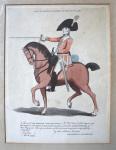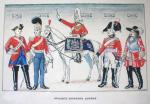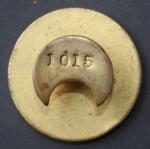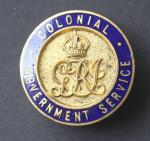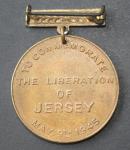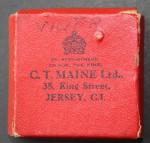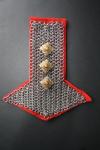-
Posts
13,225 -
Joined
-
Last visited
-
Days Won
22
Content Type
Profiles
Forums
Blogs
Gallery
Events
Store
Everything posted by Mervyn Mitton
-

Matabele Weaponry
Mervyn Mitton replied to Mervyn Mitton's topic in Great Britain: Militaria: Badges, Uniforms & Equipment
.....................................................................http://gmic.co.uk/uploads/monthly_02_2013/post-6209-0-62386600-1359734832.jpgclick............................... -

Matabele Weaponry
Mervyn Mitton replied to Mervyn Mitton's topic in Great Britain: Militaria: Badges, Uniforms & Equipment
.....................................................................http://gmic.co.uk/uploads/monthly_02_2013/post-6209-0-91600700-1359734618.jpgclick................................. -

Matabele Weaponry
Mervyn Mitton replied to Mervyn Mitton's topic in Great Britain: Militaria: Badges, Uniforms & Equipment
.......................................................................http://gmic.co.uk/uploads/monthly_02_2013/post-6209-0-87456700-1359734462.jpgclick................................. -

Matabele Weaponry
Mervyn Mitton replied to Mervyn Mitton's topic in Great Britain: Militaria: Badges, Uniforms & Equipment
..................................................................http://gmic.co.uk/uploads/monthly_02_2013/post-6209-0-76201300-1359733188.jpgclick..................................... I consider this to be one of the rarest ethnic spears that I have ever come across - and that includes Pacific Rim Countries and Australia. The closest was the one illustrated under Zulu Iklwas - where during the Anglo-Zulu War of 1879, the Zulus were so nervous of the fixed bayonet on a Martini Henry Rifle (nearly 3 metres overall) that they had a bayonet like end fixed to their battle axes. They only had time for a few to be made and they are both rare and valuable. This Matabele spear - probably for a very senior chief, will almost certainly date to the period of the 1896 up-rising. Perhaps either side of this date. For un-sophisticated tribesmen a Martini Henry rifle - capable of killing over a long distance , must have seemed like the most terrible weapon. The thought must have been if he had his spear shaft carved like one, then he might have the power ? Certainly it would have had status. Whatever the thinking, this is a very rare item - and to allow for the stock, it would have been carved from a big piece of wood. The carving is excellent and it can be recognised as a Martini immediately. The binding for the spear head is also unusual in that both the brass and copper binding and the shaft flare to meet each other. I expect that other examples must be in existance - but, this is the only one I have come across. This is , of course a fighting / stabbing spear - similar in purpose to a Zulu Iklwa. -
When the first expedition crossed into the territory that was to become Rhodesia, in 1890, the Force consisted of Pioneers and internal Police from the British South Africa Company - the guard formed by Cecil John Rhodes. Whilst the vast area of land was known through the reports of hunters and explorers - it was far from being properly mapped. The two main tribes that they ran into were the Matabele and the Mashona. Both were substantial in size and were strong warriors. They were traditional enemies and the area that was to be called Rhodesia was divided between them. The strong differences made the early settlers call the two parts of the Country - Mashonaland and Matabeleland. Settlers quickly followed the Pioneer expedition and the first major towns were Salisbury - in Mashonaland, and Bulawayo in Matabeleland. Needless to say these dominant tribes were not at all happy to find that their way of life - and indeed their land, was being taken over by white settlers backed by a stong force of Police. However, that was the way in those Colonial times and there wasn't a lot they could do. They did make things difficult though and in 1896 there was a general up-rising amongst the two tribes. Bulawayo - even with settlers from outlying areas - still only numbered some 4000 people and it was quickly besieged. The forces available to the new Government were not sufficient to control the trouble and a task force of some 800 troops was put together in South Africa to go to their aid. They were drawn from a number of units - including the Kimberley Regt. - and were succesful in bringing back law and order. I have mentioned in previous articles that the British way with Colonies was to immediately raise local forces of army and police to help the small numbers of British troops. We never had sufficient forces to maintain control without local help. The Mashonas and the Matabele turned out to be excellent in uniform. Loyal and dedicated they assisted in the Boer War and in both World Wars. The Matabele were in fact Zulus and had originally travelled in the migration that settled in Zululand in the 18th. Century. I would like to go into the history of the native tribes in Rhodesia in more detail - sufficient to say for this short resume that one of the Tribal chiefs had a falling out with the Zulu King and that he took his clan back to Rhodesia - where they became the Matabele. So, at the time of their return they were Zulus - but , as with many peoples this became filtered and it would therefore be true to now call them 'cousins' of the Zulus. Their dress, many of their weapons and their customs mostly originated from their early Zulu culture. I am sure many peole who have lived in Rhodesia - now Zimbabwe - will be able to enlarge on my comments - they will be most welcome to do this. I recently bought a small collection of Matabele weapons and will post them over the next few days. They differ from Zulu in some ways and I think you will find them interesting. Mervyn
-

WW1 WAR PASS
Mervyn Mitton replied to cadogan's topic in Great Britain: Militaria: Badges, Uniforms & Equipment
R-B. Welcome to GMIC. This pass has the same authority as the King's Messenger Badge - but for a more specific duty. A lovely item and a very good identification. Mervyn -

belt plates
Mervyn Mitton replied to blueman's topic in Great Britain: Militaria: Badges, Uniforms & Equipment
Kevin - 72nd. of Foot - The Seaforth Highlanders. Mike is right to caution - these small pieces are easily cast as copies. However, this one appears to have the correct studs for the cross belt. The blackening which has been partially cleaned on the front is a little strange. I would have thought ordinary patination would not usually have this 'thick' appearance. Without seeing it , difficult to tell. The second one I thought was the Inniskilling Dragoons - but not so. You must tell us - when you are asking for advice - what unit is shown on front. Saves everyone a lot of time. Enlargement doesn't make it readable - give us the wording. Most Irish Regt's have a harp somewhere. The Crown on the 72nd is Victorian - nice rounded shoulders. The second one is either William 4th - or, early Victorian. The shoulders are much more angular. It is unlikely to be early Georgian as it bears the Sphinx. This was a Battle Honour for British Forces that fought Napoleon in Egypt in 1802. Mervyn -
Gwynne - very unusual - and very good news that we have two new members with a different background. I hope that we will have some interesting posts in the future. What is the significance of the low number on the epaulette - and what would be the equivalent police rank ? Police don't have a lot to do with prisons and the warders. I have taken a few prisoners to the London prisons - and on one occasion helped to escort a very unpleasant woman to Holloway. We actually went inside and it was a place I wouldn't have wanted to work. Under our Blog section you will find posts from one of our US members who is a Sgt. in one of their women's prisons. Mervyn
-

sabretache
Mervyn Mitton replied to blueman's topic in Great Britain: Militaria: Badges, Uniforms & Equipment
Peter - at 400 mag. the Crown looks like an early Georgian - the side are straight, rather then the curved ones from the later part of the 18th C. There is of course a chance that it is foreign - Kevin must tell us about the buttons - again the details are not clear. Mervyn -

WW2 Neglected Medal Group
Mervyn Mitton replied to Mervyn Mitton's topic in Great Britain: Orders, Gallantry, Campaign Medals
This hand coloured print dates from 1799 - and is of the same Regt.. The fact that there are two mounted prints seems to show a connection with the medals. Now - we just need to findout who he was ? Mervyn ..................................................................http://gmic.co.uk/uploads/monthly_01_2013/post-6209-0-69045100-1359301607.jpgclick................................... -

WW2 Neglected Medal Group
Mervyn Mitton replied to Mervyn Mitton's topic in Great Britain: Orders, Gallantry, Campaign Medals
This dates from 1975 and is a rather rough watercolour. I must see if the name of the artist has any importance. ...............................................................http://gmic.co.uk/uploads/monthly_01_2013/post-6209-0-62736700-1359301350.jpgclick................................... -

WW2 Neglected Medal Group
Mervyn Mitton replied to Mervyn Mitton's topic in Great Britain: Orders, Gallantry, Campaign Medals
I wonder if it will be possible to track him down from this number ? ............................................................................http://gmic.co.uk/uploads/monthly_01_2013/post-6209-0-28826500-1359301164.jpgclick.............................. -

WW2 Neglected Medal Group
Mervyn Mitton replied to Mervyn Mitton's topic in Great Britain: Orders, Gallantry, Campaign Medals
What about this official badge - did he perhaps go into the Colonial Service after the War ? .........................................................................http://gmic.co.uk/uploads/monthly_01_2013/post-6209-0-62611000-1359300884.jpgclick............................... -

WW2 Neglected Medal Group
Mervyn Mitton replied to Mervyn Mitton's topic in Great Britain: Orders, Gallantry, Campaign Medals
......................................................................http://gmic.co.uk/uploads/monthly_01_2013/post-6209-0-01621900-1359300694.jpgclick........................ -

WW2 Neglected Medal Group
Mervyn Mitton replied to Mervyn Mitton's topic in Great Britain: Orders, Gallantry, Campaign Medals
.......................................................................http://gmic.co.uk/uploads/monthly_01_2013/post-6209-0-79541600-1359300577.jpgclick............................ -

WW2 Neglected Medal Group
Mervyn Mitton replied to Mervyn Mitton's topic in Great Britain: Orders, Gallantry, Campaign Medals
Did he come from the Isle of Jersey ? Or is this irrelevant ? Was this a first or, surname. ......................................................................http://gmic.co.uk/uploads/monthly_01_2013/post-6209-0-63961800-1359300418.jpgclick.................................. -

WW2 Neglected Medal Group
Mervyn Mitton replied to Mervyn Mitton's topic in Great Britain: Orders, Gallantry, Campaign Medals
......................................................................http://gmic.co.uk/uploads/monthly_01_2013/post-6209-0-43720400-1359300293.jpgclick.............................. -

WW2 Neglected Medal Group
Mervyn Mitton replied to Mervyn Mitton's topic in Great Britain: Orders, Gallantry, Campaign Medals
From a deceased estate - which is why I know so little about-it. Here are two views of the shoulder epaulette. .....................................................................http://gmic.co.uk/uploads/monthly_01_2013/post-6209-0-58580000-1359300153.jpg....................................... -

WW2 Neglected Medal Group
Mervyn Mitton replied to Mervyn Mitton's topic in Great Britain: Orders, Gallantry, Campaign Medals
...............................................................................http://gmic.co.uk/uploads/monthly_01_2013/post-6209-0-36034600-1359299780.jpgclick............................. -

WW2 Neglected Medal Group
Mervyn Mitton replied to Mervyn Mitton's topic in Great Britain: Orders, Gallantry, Campaign Medals
.......................................................................http://gmic.co.uk/uploads/monthly_01_2013/post-6209-0-23288500-1359299568.jpgclick......................................... -

WW2 Neglected Medal Group
Mervyn Mitton replied to Mervyn Mitton's topic in Great Britain: Orders, Gallantry, Campaign Medals
Firstly, here are sopme close-ups of the group. ........................................................................http://gmic.co.uk/uploads/monthly_01_2013/post-6209-0-55792600-1359299324.jpgclick......................... -

WW2 Neglected Medal Group
Mervyn Mitton replied to Mervyn Mitton's topic in Great Britain: Orders, Gallantry, Campaign Medals
I think you will agree that there is a big difference in appearance ? You have to wonder why it was so damaged in the ribbons - probably children. Unfortunately, being a British set there is no naming. Sometimes M.C.'s will be privately named - but, not this time. However, it is dated 1943 - and this is a clue on it's own. This was the North African campaign with British and South African and other Allied troops. The Africa Star is present - with 8th. Army Bar - and he also served in Italy. Amongst the other small items that came with the Group is a Cavalry officer's dress epaulette to a Captain. There were also two prints showing the 1st. King's Dragoon Guards Regt.. This Regiment was present in both the North Africa campaign and also in Italy - they were using armoured cars - several different types from what I have been able to find out. The Defence medal is also a clue. They could have earnt this in the UK - however, many Sth. Africans became entittled to it since the British set up training camps in Egypt and Tunisia - and time served there often entitled the Defence medal. South Africans could only have it this way . (unless they served in the UK for training) One of the problems with separate small items , is that you are never sure if they are associated with the medals or, just the personal bits of another member of the family ? I will show all of these other pieces - hopefully one of our expert researchers will take on the challenge - and earn my undying gratitude............ I had been planning to send the group to auction in the UK, but for the present it will remain here.







